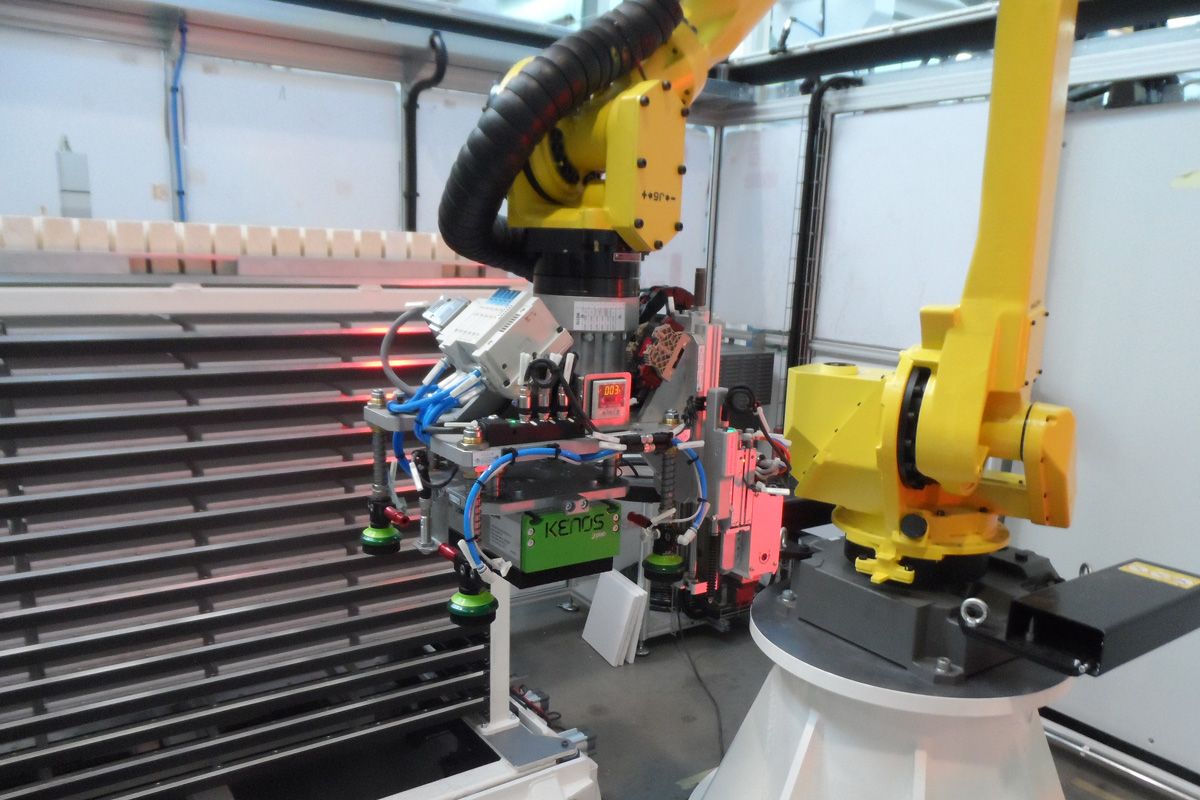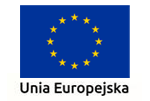Zirconium nozzles lines
Robotic lines in the technological line for the production of zirconium nozzles, a product for the foundry industry. Palletization, depalletization, milling and vision quality control systems and traceability application.


Line 1
| Parameter | Value |
|---|---|
| Personnel | 1 operator |
| Dimensions | 4,9 x 5 x 2,45 m |
| PLC | SIEMENS S7-1515F |
| HMI | SIEMENS TP1200 COMFORT 12“ |
| IPC | 347E, RACK 19" |
| Laser marking | KEYENCE MD |
| Paletizing robot | FANUC M710iC Pluss |
Line 2
| Parameter | Value |
|---|---|
| Personnel | 1 operator |
| Dimensions | 4,9 x 5 x 2,45 m |
| PLC | SIEMENS S7-1515F |
| HMI | SIEMENS TP1200 COMFORT 12“ |
| IPC | 347E, RACK 19" |
| Marking laser | KEYENCE MD |
| Depaletizing robot | FANUC M710iC Plus |
| Packing robot | FANUC M10iA Plus |
Manufacture of zirconium nozzles
Zirconium inserts, also known as zirconium nozzles, are an important product for the foundry industry, used in continuous casting of steel. They are made in the powder pressing technology. The key parameter for the end customer is the inner diameter of the nozzle, measured with an accuracy of hundredths of a millimeter. From the point of view of safety and quality of the casting process, the consistency of the structure of the nozzle material is no less important. The insert must withstand the extreme conditions of many hours of operation at temperatures above 150° C and remain resistant to erosion and temperature shrinkage.
All the above conditions had to be taken into account in the work on creating a technological line for the production of nozzles. The assumption was to minimize human handling and to take into account the key processes: powder pressing and annealing in the furnace. Already at the beginning of the work it became clear that two lines should be created.
- Line 1 - after pressing, nozzles are milled and laser marked, and then palletized by a robot in an appropriate manner before transport to the furnace
- Line 2 - after annealing in the furnace, the nozzles are unloaded (depalletizing) and transferred to the vision quality control station, then to the packing and unloading station
Line 1 - milling, marking and palletizing
The nozzles are loaded by transport from the press. The reloading manipulator translates them onto the turntable. The table ensures the transport of components successively through the laser marking station and the milling station. The MJC Mini dust collector provides the extraction of dust generated in the process. After milling and unloading from the rotary table, a visual check of the geometry is carried out. Items with the OK status are transported to the palletizing station. The palletizing robot is equipped with a gripper with a vision system. It creates an appropriately shaped, multi-level stack, using plates, posts and dividers from a magazine with a system of automatically extended drawers. The palletizing area is secured by the EFAFLEX high-speed roller door. The finished stack is transported by the operator to the furnace.
Line 2 - depalletization, packaging and labeling
After heat treatment in the furnace, the complete stacks go to line 2. The assumed maximum temperature of the components going to the line is 50C. The depalletizing robot decomposes the stack. The auxiliary elements go to the appropriate magazine drawers, the nozzles are put on the transport, which directs them to the turntable of the vision control station. After passing the inspection and unloading from the turntable, the nozzles are packed. The task of the second robot is to complete the packaging in the form of a box, trusses and washers, and to insert the nozzles. The complete box with nozzles passes to the labeling station and is then closed, glued and ready for collection. The line entrance is secured by an EFAFLEX high-speed rolling door.
Summary
Thanks to the use of robots, manipulators, and an appropriate storage system for palletizing and depalletizing, a process line was built with minimal personnel handling, which was reduced to transporting the stack to / from the furnace. Automated milling and vision inspection stations ensure the necessary repeatability and quality of production. The whole is complemented by the Monitoring / Traceability application (currently part of TOMAI Factory System). The application that communicates with the PLC is an important element in tracking parameter changes and quality results.
